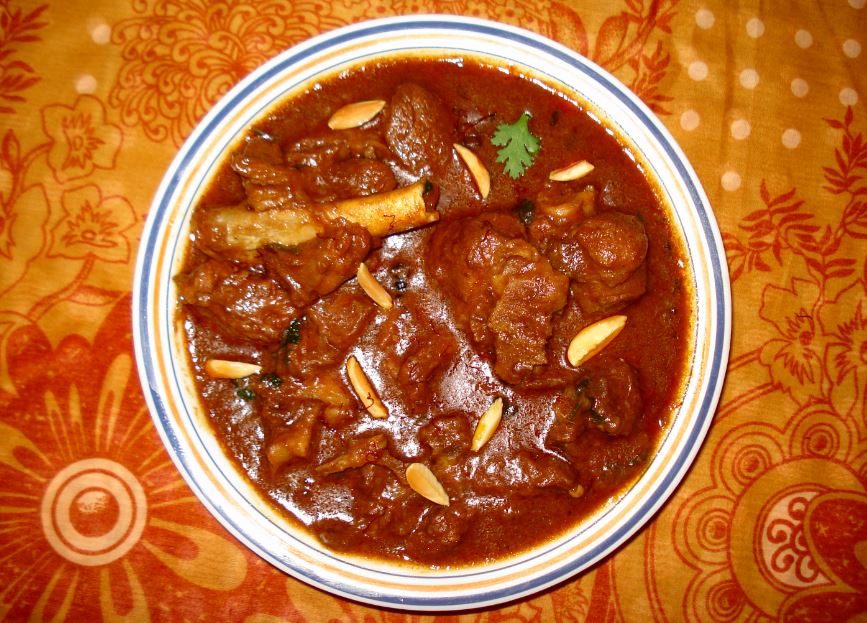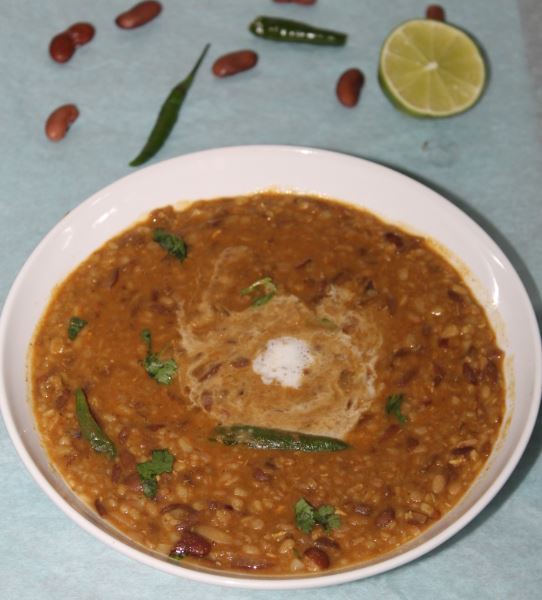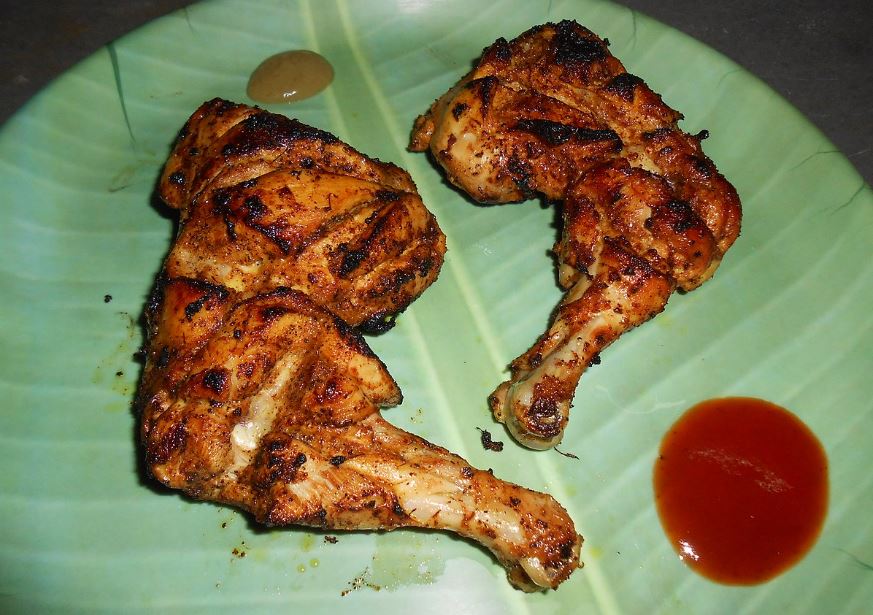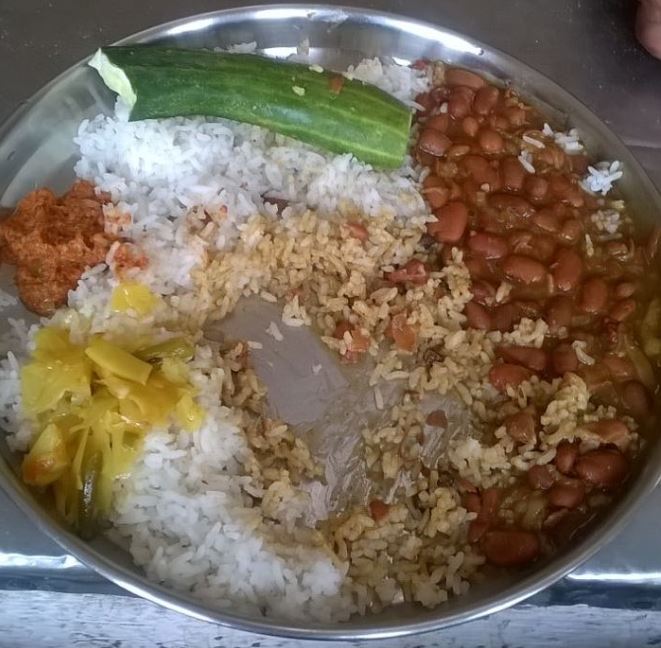Summers in North India are extremely hot, while winters there are extremely frigid. The states that make up the area are Jammu and Kashmir, Himachal Pradesh, Punjab, Uttaranchal, Uttar Pradesh, Haryana, Bihar, Jharkhand, Chattisgarh, and Madhya Pradesh.
India is a huge nation with a wide variety of food. South or Northeastern Indian cuisines are very dissimilar from North Indian cuisine. Even more specifically, each region is known for its own special dishes. Many people would consider North Indian cuisine to be the definition of Indian Cuisine.
Influence of Geography and Culture
Fresh seasonal fruit and vegetables are in plentiful supply. Due to its location in respect to the rest of the Subcontinent, this part of the country has had significant Central Asian effects on both its food and culture. Cooking in the Mughlai and Kashmiri cuisines is not only common, but also well-liked.
Staple Foods North Indians Seem to Prefer
If the rich diversity of Indian bread is any indication, rice is not preferred over it. The tandoori roti, naans, loaded parathas, kulchas, and flaky Indian bread with a variety of vegetarian and non-vegetarian fillings are all produced in this region (bread made from the fermented dough). Popular rice dishes include complex biryanis and pulaos (pilafs).
Here are the most popular dishes served in North Indian.
Rogan josh

Although it is now more firmly linked to Kashmir in India, the fragrant lamb curry known as rogan josh is thought to have Persian origins. Tender beef and a rich, spicily crimson sauce made from deseeded Kashmiri chillies are the stew’s distinguishing features.
Lamb pieces are frequently cooked in a gravy consisting of yogurt, ginger, caramelized onions, and other flavorful herbs and spices. The name of the dish is a combination of two words: josh, which denotes passion or heat, and rogan, which means clarified butter or oil.
Kadhi
The term “kadhi” refers to a large set of Indian foods that commonly employ gram flour to thicken yogurt or buttermilk-based sauces (besan). Although kadhi is well-liked throughout India, each region has developed its own own variant with variations in the ingredients, extras, consistency, flavor, and preparation.
The Punjabi kadhi, which is distinguished by its thick consistency and the addition of pakora fritters, is one of the most well-liked types. Gujarati, Rajasthani, and the Sindh variant made with tamarind are three other prominent varieties. Despite the enormous variety, kadhi, which is often served with rice or roti bread, is a great comfort dish.
Dal tadka
A classic lentil-based dish from northern India is called dal tadka or tadkewali dal. Despite some variations, toor dal (split yellow pigeon peas), garlic, ginger, onions, tomatoes, garam masala, chili peppers, ghee, cumin, coriander, turmeric, red chili powder, and fenugreek leaves are typically used in the preparation of the meal.
These ingredients are prepared and combined with tadka (tempering), which consists of ghee-cooked spices including asafoetida, garlic, and chili peppers. Dal tadka is often made, garnished with coriander leaves, and served hot with roti and jeera rice on the side.
Shahe Paneer
Shahi paneer is a cheese curry that is made with paneer cheese, onions, almond paste, and a rich, spicily tomato-cream sauce. It is a dish that comes from the Moghul cuisine of India. Indian breads like naan, roti, or puri are frequently served with the dish.
It is customarily made as a vegetarian main meal for special occasions and celebrations and is frequently referred to as the Royal paneer. Shahi paneer is a substantial, nutrient-rich dish that is frequently topped with coriander leaves.
Dal Makhani

Dal makhani is one of the most well-known lentil meals in India, both inside and outside of its boundaries, despite the fact that it is a Punjabi cuisine. It is made out of entire black lentils, often known as urad, and red kidney beans.
The meal is patiently cooked in a thick, tomato-based sauce and made with generous amounts of ghee and a variety of ingredients, including chile and ginger garlic paste. The last component—a drizzle of melted ghee or butter—which gives this traditional dish its signature velvety flavor—gives rise to the name “makhani,” which means “butter.”
Palak paneer
In a rich, thick sauce made of puréed spinach combined with tomatoes, garam masala, garlic, and various spices, paneer cheese is used to make the popular vegetarian meal known as palak paneer. Since the word “paneer” refers to the cheese and the word “palak” means “spinach” in Hindi, the dish’s essential ingredients are even stated in the name.
Although the dish’s origins are in the Punjabi region, palak paneer is seen in numerous forms all over India. It is a very wholesome dish that may be eaten for breakfast, lunch, or dinner and is typically served with rice or Indian flatbreads like naan and roti.
Tikka
Indian tikka is a meal made of boneless, diced meat—typically chicken—marinated in yogurt with traditional Indian seasonings such turmeric, cumin, coriander, cayenne pepper, chile, garlic, and ginger. In a tandoor, the traditional cylindrical clay oven, the meat is grilled over charcoal.
The meat is constantly coated with oil or butter to keep it moist and tender. Although the plain forms of tikka are very popular, they are normally fried and served on sizzlers. It is frequently mistakenly linked to tandoori chicken, a type that is roasted and served with the meat still attached to the bone.
Tandoori chicken

One of the most well-known dishes in Indian cuisine is tandoori chicken or tandoori murgh, whose name comes from the Persian word tannur, which means fire. The cuisine comprises of skewered chicken flesh that has been marinated in yogurt and spiced with cumin, nutmeg, and tandoori masala.
Its preparation makes it a special dish; traditionally, it is cooked at high temperatures in cylinder-shaped clay ovens called tandoors, producing luscious meat with a smokey flavor. According to a widely accepted idea, it was created by Kundan Lal Gujral in his restaurant Moti Mahal (Palace of Pearls).
Butter chicken
Murgh makhani, often known as butter chicken, is a standard dish in most Indian restaurants and is likely the most well-known of all Indian cuisines. The dish was created in Delhi in the 1950s by Kundan Lal Gujral, who thereafter launched the Moti Mahal restaurant.
Unaware that they had unintentionally discovered one of the most adored meals ever and a potential international delicacy, the restaurant’s chefs mixed leftover marinade fluids with tomatoes and butter before stewing the tandoor-cooked chicken in it.
Biryani
A series of traditional meals known as “biryani” originate from the Mughal Empire. The essential components of biryani are rice (preferably basmati), spices, a meat, egg, or vegetable basis, and a variety of other ingredients like yogurt, almonds, dried fruits, and other optional elements.
The dish is thought to have been created in the 1600s by Mumtaz Mahal, the queen of Emperor Shah Jahan. The word “biryani” comes from the Persian word “birian,” which means “fried or roasted,” and it was groups of traders and immigrants that brought the meal from Persia to India.
Conclusion
The culinary traditions of many nations have incorporated North Indian flavors, which have become a significant component of global cuisine. North Indian cuisine is renowned for its unique tandoori delicacies and vegetarian inventions, and it is still growing and thriving around the world.
